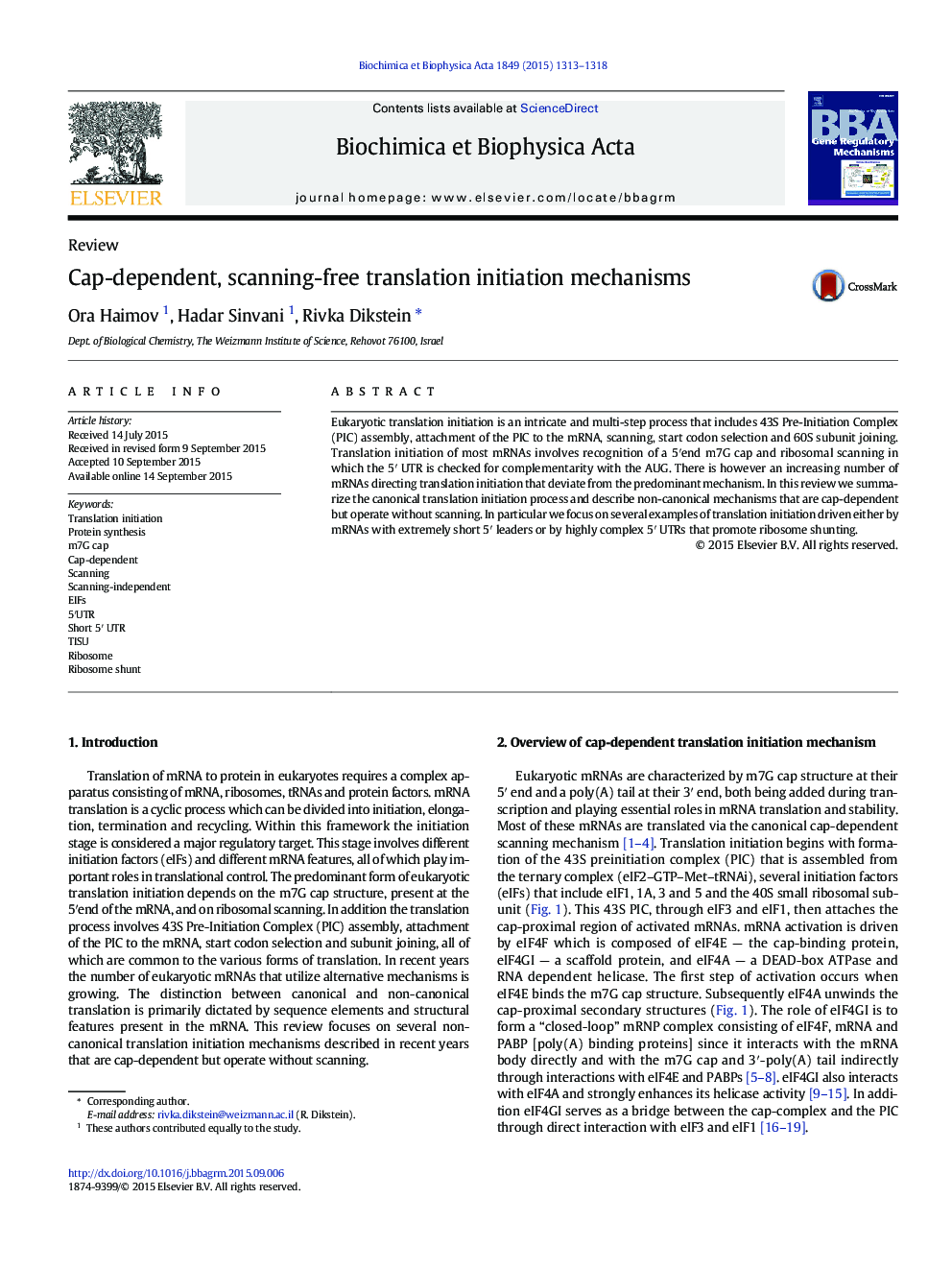| Article ID | Journal | Published Year | Pages | File Type |
|---|---|---|---|---|
| 1946355 | Biochimica et Biophysica Acta (BBA) - Gene Regulatory Mechanisms | 2015 | 6 Pages |
•Canonical translation involves mRNA cap recognition and ribosomal scanning.•Some mRNAs direct translation initiation that deviates from the canonical mechanism.•This review describes various mechanisms of cap-dependent translation initiation.•A particular focus is given to mRNAs with extremely short or highly complex 5′ UTRs.•These mRNAs drive cap-dependent but scanning free translation initiation.
Eukaryotic translation initiation is an intricate and multi-step process that includes 43S Pre-Initiation Complex (PIC) assembly, attachment of the PIC to the mRNA, scanning, start codon selection and 60S subunit joining. Translation initiation of most mRNAs involves recognition of a 5ʹend m7G cap and ribosomal scanning in which the 5′ UTR is checked for complementarity with the AUG. There is however an increasing number of mRNAs directing translation initiation that deviate from the predominant mechanism. In this review we summarize the canonical translation initiation process and describe non-canonical mechanisms that are cap-dependent but operate without scanning. In particular we focus on several examples of translation initiation driven either by mRNAs with extremely short 5′ leaders or by highly complex 5′ UTRs that promote ribosome shunting.
